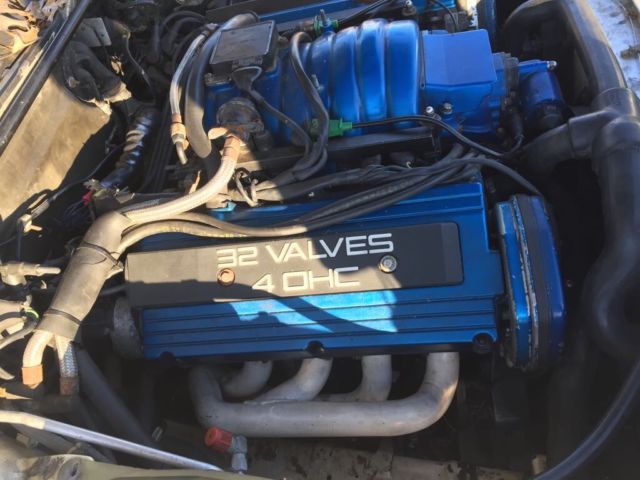1990 Audi V8 Quattro Rare 5 Speed Sedan 1 of 72 Ur S4 200 No Reserve UR 80 90
- Condition: Used
- Make: Audi
- Model: V8 Quattro
- Type: Sedan
- Year: 1990
- Mileage: 157,000
- VIN: wauke54c3mn001287
- Color: Pearl White
- Engine size: 3.6L V8
- Number of cylinders: 8
- Power options: Air Conditioning, Cruise Control, Power Locks, Power Windows, Power Seats
- Fuel: Gasoline
- Transmission: Manual
- Drive type: AWD
- Interior color: Black
- Drive side: Left-hand drive
- Safety options: Anti-Lock Brakes, Driver Airbag
- Options: 4-Wheel Drive, CD Player, Leather Seats, Sunroof
- Vehicle Title: Clear
- Location: Newark, New Jersey, United States
Description
One of only 72 5 Speed Manual Audi V8 Cars shipped over here. Rare Pearl white with black is very desirable color combo. Car has 157k and good brakes, good clutch. Stainless Steel Headers.
Has an issue with getting power from ECU to Motor. needs work. It starts and runs with a battery pack attached to the jump start knob under the hood. Motor has new valve cover gaskets and timing belt was done along with water pump, many belts hoses and some painting of parts 2 years ago and was registered and driving up until just over a year ago. Needs a little love to be back on the road. when these are running they get good money and really nice ones go for 10-20K. Out of 72 imported here I cant think there is many left.
These cars drive like a dream. without the Automatic the motor has much more power and torque and no worry of the transmission going out. This is a rare car.
Interior is average. exterior is average with some passenger fender dents. passenger rear quarter has some paint issues and dents. No sure what does and doesnt work at this point as I havent had any time to do anything with the car. That is why it it being sold. Car is complete.
The season doesnt make for very good pictures as you can see.
The Audi V8 (Typ 4C) is a four-door, full-size luxury sedan, built by Audi in Germany from 1988 to 1993, as the company's flagship model. It was the first car from Audi to use a V8 engine, and also the first Audi to combine a quattro system with an automatic transmission. Early cars used 3.6-litre V8s, while later cars featured a 4.2-litre version of the engine. The Audi V8 was replaced by the Audi A8 in 1994, although the A8 was not sold in North America until 1996.
The competition model of the Audi V8 won back-to-back Deutsche Tourenwagen Meisterschaft driver's titles in 1990 and 1991, with the championship winners being Hans-Joachim Stuck and Frank Biela respectively.[1][2] Audi was the first company to win back-to-back DTM titlesStandard features for the Audi V8 included a 32-valve, double overhead camshaft (DOHC) V8 engine[3] and a four-speed electronically controlled ZF 4HP24A automatic transmission providing Audi's quattro permanent four-wheel drive system.[4] A five-speed (later in production six-speed) manual transmission was also available.[5][6]
The Audi V8 had a galvanized steel body, with a 10-year anti-perforation warranty (against corrosion).[7] The Audi V8 was specifically designed to be a top of the range 'flagship' car and included a number of luxury features as standard equipment, including leather seating and Audi's quattro all wheel drive system[3] (see standard features list).[8] The Audi V8 created a new elevated image for the company, providing a viable alternative to established competitors such as Mercedes-Benz.[8] In this regard, the car was a cornerstone in developing the history of the Audi marque as it is todayPowertrain[3] detail of the Audi V8 featured one of two all-new, all-aluminium alloy engines – both petrol engines, and both in V8 configuration with 32 valves (four valves per cylinder) with dual valve springs, and four overhead camshafts (DOHC).[15] The design set the pattern for future Audi-developed Volkswagen Group V8 engines. In addition to using an all-aluminum alloy cylinder block (when the established material was grey cast iron), the camshafts were driven using a hybrid method. A rubber/kevlar toothed timing belt, driven from the front of the crankshaft operated only the exhaust camshaft in each bank. The inlet camshafts were then operated via a simplex roller chain from the exhaust camshaft – the right bank, (cylinders 1–4) at the rear of the engine, and the left bank (cylinders 5–8) at the front of the engine, immediately behind the timing belt. This method reduced the complexity of the timing belt layout, and as a result, required fewer components, such as idler rollers and guides, and lead to easier and less costly maintenance of the timing belt and associated components. The intervals for changing the timing belts varied; the 3.6V8 (PT) required changing every 90,000 kilometres (60,000mi),[15] whereas the 4.2V8 (ABH) had a longer interval at 120,000 kilometres (75,000mi).[15] A thermostatically controlled electric cooling fan also became standard, replacing the engine-driven viscous fans on earlier cars. This not only provided forced airflow for the engine coolant radiator, but also for the smaller engine oil cooler.[7]
Audi's 'trademark' quattro permanent (or semi-permanent, dependent on gearbox type) four-wheel drive system was the only offering for the drivetrain.[4] This normally distributes the engine torque as a 'default' 50:50 between front and rear axles, but can automatically dynamically apportion up to a bias of 20:80 to 80:20 front and rear.[4] The automatic transmission utilizes a hydraulically controlled multi-plate clutch to apportion drive between front and rear axles,[4][12] whereas the manual transmission variants utilize a Torsen type 1 Torque Sensing center differential.[4] The rear axle final drive unit contains a Torsen type 1 Torque Sensing differential, instead of the more common hypoid open differentialOn Jan-12-18 at 09:39:38 PST, seller added the following information:
Car is fully loaded with heated seats, power everything, front and rear fog lights.
 1990 Audi 200 Quattro 5-Speed Manual 5 Cylinders NO RESERVE
1990 Audi 200 Quattro 5-Speed Manual 5 Cylinders NO RESERVE
Mileage: 135395
 1990 Audi Coupe Quattro Rare
1990 Audi Coupe Quattro Rare
Mileage: 150000
 1990 Audi V8 Quattro Sedan Super Low 100K mi Clean TYP D11 4C
1990 Audi V8 Quattro Sedan Super Low 100K mi Clean TYP D11 4C
Mileage: 100400
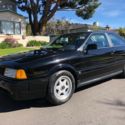 Rare 1990 Audi Coupe Quattro 5spd Manual, 127K Miles
Rare 1990 Audi Coupe Quattro 5spd Manual, 127K Miles
Mileage: 127000
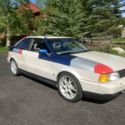 1990 Audi Coupe Quattro 20v 2.3l Audi Sport colors
1990 Audi Coupe Quattro 20v 2.3l Audi Sport colors
Mileage: 127500
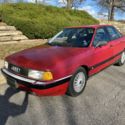 1991 Audi 80 Quattro Sedan Red AWD Manual QUATTRO
1991 Audi 80 Quattro Sedan Red AWD Manual QUATTRO
Mileage: 222000
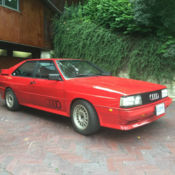 1985 Audi Quattro - Ultra Rare Ur-Quattro For Sale
1985 Audi Quattro - Ultra Rare Ur-Quattro For Sale
Mileage: 134,375
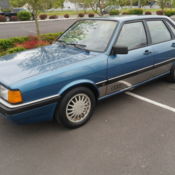 1985 Audi 4000 S Quattro Sedan Rare Classic Oceanic Blue UR S4 200 5000 20V
1985 Audi 4000 S Quattro Sedan Rare Classic Oceanic Blue UR S4 200 5000 20V
Mileage: 158,500
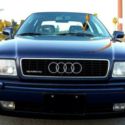 Audi 90 B4 QUATTRO Rare! AWD 5 SPEED MANUAL! DIFF!!! ONLY 84k! collectible car!
Audi 90 B4 QUATTRO Rare! AWD 5 SPEED MANUAL! DIFF!!! ONLY 84k! collectible car!
Mileage: 84600
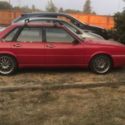 1985 Audi 4000 CS Quattro Rare Classic Runs great No rust No reserve Ur 80 90
1985 Audi 4000 CS Quattro Rare Classic Runs great No rust No reserve Ur 80 90
Mileage: 164,000






